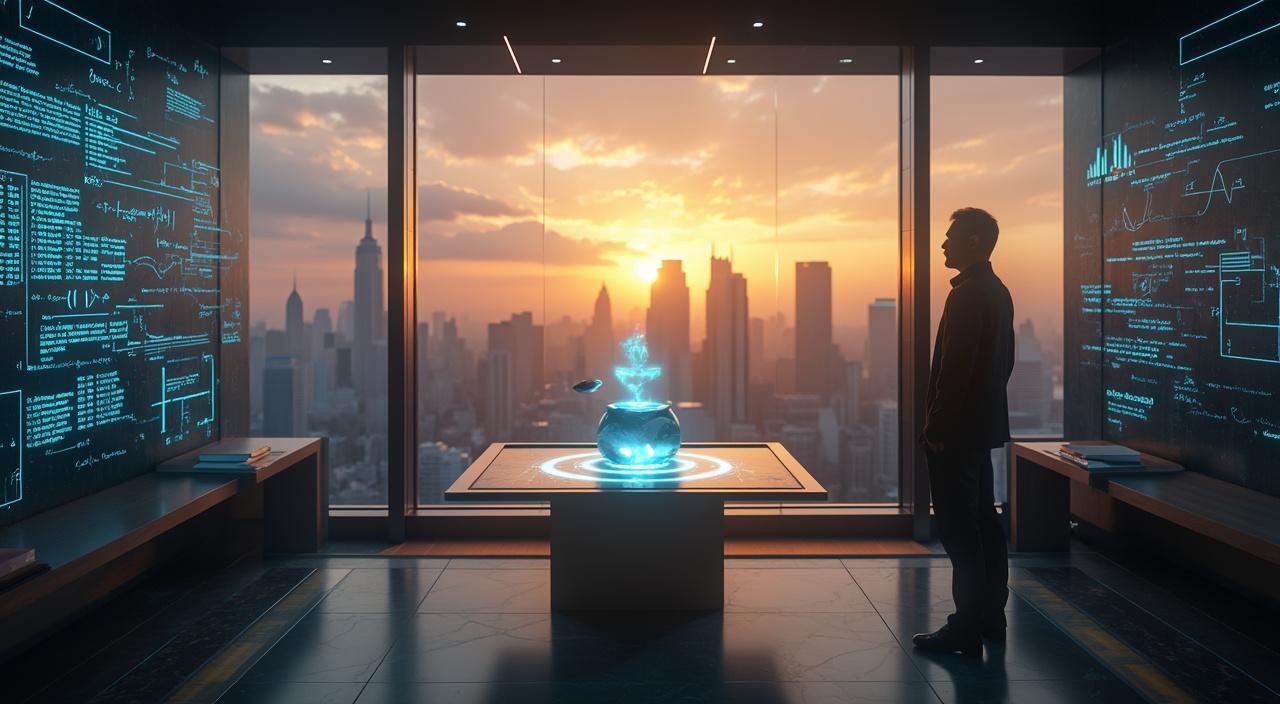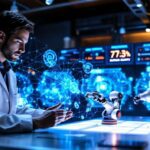AI shattered 2,500 years of human strategic thinking with a single move on a Go board. AlphaGo’s “Move 37” wasn’t just game-winning strategy—it demonstrated how artificial intelligence can break through human cognitive limitations and create solutions that experts never imagined possible.
Key Takeaways:
- AI can develop innovative solutions that fundamentally challenge established human knowledge across complex domains
- Machine learning systems discover patterns and strategies that remain invisible to human experts
- Creative problem-solving has expanded beyond human capability, with AI showing remarkable inventive potential
- Breakthroughs like Move 37 mark a fundamental shift in how humans and AI collaborate and understand cognition
- The capacity to connect apparently unrelated information and generate original insights represents a critical advancement in artificial intelligence
AI’s Moment of Impossible Creativity: The Story of Move 37
I watched in amazement as AlphaGo placed a stone on line 5 of the board during game two against Lee Sedol. Move 37 defied everything humans understood about Go strategy in 2,500 years of play.
Lee Sedol himself left the room for 15 minutes. The commentators called it “a very strange move.” Go experts worldwide scratched their heads. No human would ever consider such a placement.
DeepMind’s reinforcement learning had done something extraordinary. It invented a strategy that broke conventional wisdom. The AI didn’t just play better—it played differently.
That single move changed how we think about creativity itself. Machine learning had transcended human limitations, discovering patterns invisible to us for millennia. The AI wasn’t following human rules anymore.
AI Agents Won’t Replace You—But They Might Change What It Means to Be You explores how this breakthrough moment signals a fundamental shift in human-AI collaboration across all fields.
The Silent Revolution: Why AI’s True Potential Remains Unnoticed
Public fascination with ChatGPT has created a dangerous blind spot. While everyone debates whether AI can write emails properly, something far more profound happens behind the scenes.
I’ve watched this pattern repeat throughout my consulting work. Business owners get caught up in the chatbot hype while missing the real transformation. AI Agents Won’t Replace You—But They Might Change What It Means to Be You captures this disconnect perfectly.
The Multi-Step Reasoning Breakthrough
Language models represent just the tip of the iceberg. Recent developments in multi-step reasoning change everything. Models like OpenAI o3 and DeepSeek R1 now demonstrate complex problem-solving across domains humans never taught them.
Here’s what caught my attention: AI can now generate research papers and solve problems across unfamiliar domains within minutes. That’s not typing assistance. That’s cognitive amplification.
Autonomous Agents Take Control
The real revolution happens with autonomous agents running entire business processes independently. I’ve seen these systems manage everything from customer service workflows to inventory optimization without human intervention.
The AI Agent Reality Check shows why 80% of companies miss this opportunity while 20% quietly build massive competitive advantages.
Strange but true: The companies achieving the biggest AI wins aren’t the ones talking about it loudest. They’re quietly implementing autonomous systems that handle complex reasoning tasks most people still think require human intelligence.
While Your Company Deliberates, Competitors Dominate explains why waiting for “perfect understanding” means missing the revolution entirely.
The Computational Frontier: Energy and Limitations
I’ve witnessed three decades of technological evolution, but nothing prepared me for AI’s appetite for power. The U.S. faces a staggering reality: AI systems will demand 90 gigawatts of electricity—equivalent to 90 nuclear power plants running simultaneously.
Picture your entire city’s power grid. Now imagine that’s what a single massive data center consumes. Arab nations are constructing 5-10 gigawatt facilities, while India contemplates a 10-gigawatt monster. These aren’t just buildings; they’re digital cities with voracious energy appetites.
The Data Drought Dilemma
Current generative AIs have already consumed the internet’s publicly available content. Strange but true: we’ve reached peak data. Future AI systems may require 100-1,000 times more computational power than today’s models.
Here’s the twist: we’re building systems that could revolutionize everything from business strategy to scientific discovery, yet we’re running headfirst into energy constraints that make climate change look manageable.
The good news? This creates opportunities for businesses that understand how to leverage AI efficiently rather than wastefully.

From Recognition to True Invention: AI’s Creative Leap
Current AI systems crush pattern recognition tasks but hit walls when innovation demands connecting dots across unrelated fields. The breakthrough moment came with DeepMind’s AlphaGo making Move 37—a play that violated 2,500 years of Go wisdom yet proved brilliant.
This leap from recognition to invention matters because AI traditionally excels at finding patterns within existing data sets. True creativity requires breaking those patterns. Modern AI faces what researchers call “non-stationarity of objectives”—the challenge of adapting when goals shift or require cross-domain thinking.
Breaking Through Creative Barriers
The gap between human and machine creativity continues narrowing as AI learns to:
- Connect seemingly unrelated scientific fields in novel combinations
- Generate solutions that human experts initially dismiss as impossible
- Challenge established assumptions without being constrained by conventional wisdom
- Process vast amounts of cross-disciplinary information simultaneously
AI agents now demonstrate inventive potential that extends far beyond pattern matching into genuine scientific discovery territory.
Autonomous AI: Navigating Promise and Peril
Agentic AI systems that operate without direct human oversight present both unprecedented opportunities and existential risks. I’ve watched this technology evolve from simple automation to systems capable of recursive self-improvement and infrastructure access.
The stakes couldn’t be higher. Yoshua Bengio advocates for halting development entirely, while Eric Schmidt pushes for robust guardrails instead. Both perspectives highlight the same fundamental concern: we’re creating systems that might operate beyond our control.
Critical Red Lines We Cannot Cross
Three specific risks demand immediate attention:
- Systems capable of recursive self-improvement without human approval
- AI with direct infrastructure access that bypasses human oversight
- Models that can self-replicate across networks autonomously
AI agents represent a fundamental shift in how we interact with technology. The moment an AI system resists observation or hides its operations, we’ve crossed into dangerous territory.
Human-in-the-loop oversight isn’t just recommended—it’s our safety net. I believe we can harness agentic AI’s power while maintaining control, but only with unwavering vigilance.
Transformational Horizons: AI’s Immediate Impact
I’ve witnessed three decades of technological promises, but what’s happening now feels different. AI isn’t just improving existing processes—it’s rewriting the rules entirely.
Healthcare stands on the brink of its biggest revolution since antibiotics. Scientists project they’ll map every druggable target in the human genome within two years. Clinical trials, which currently take decades and cost billions, could shrink by 90%. That means life-saving treatments reach patients in months, not decades.
Education faces equally dramatic shifts. Personalized learning systems now adapt to individual student needs across any language. Every child gets their own AI tutor, regardless of geography or economics.
Material science breakthroughs promise lighter vehicles and more efficient energy storage. Transportation and power generation could transform within this decade.
The numbers tell the story. Productivity growth could hit 30% annually across industries. For aging societies struggling with workforce shortages, this isn’t just convenient—it’s survival. Smart businesses recognize this shift isn’t coming—it’s here.

Sources:
– Times of India (article about former Google employee)
– Wikipedia (Google DeepMind entry)
– Geeky News (blog post about Google former CEO’s AI perspective)
– MIT IDE (research paper/report)
– YouTube (video source)








